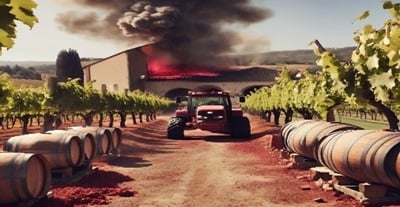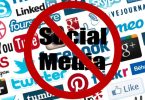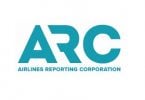Specific data on the number of crimes perpetrated specifically in vineyards and wineries in the USA is not readily available. Crime statistics typically categorize offenses by type (e.g., theft, vandalism, fraud) rather than by location, making it challenging to isolate incidents occurring specifically in vineyards and wineries.
Vineyards and wineries, like any other business or agricultural operation, can be subject to various types of crimes, including theft, vandalism, fraud , and environmental violations. The prevalence of these crimes can vary depending on factors such as the location of the vineyard or winery, local crime rates, security measures in place, and the economic value of the assets involved.
Grape Theft
The theft of grapes from vineyards, often referred to as “grape rustling,” results in significant financial losses for vineyard owners and the wine industry. The exact amount of money lost annually can vary greatly depending on the region and the scale of thefts. `
Equipment Theft
Machinery and equipment used in vineyards, such as tractors, irrigation systems, or fermentation tanks, can be valuable targets for thieves.
Vandalism
Vandals may damage grapevines, irrigation systems, or other property in the vineyard, leading to loss of crops and costly repairs.
Wine Theft
Once wine is produced and stored in wineries, it becomes a target for theft. This can occur at various stages, from the fermentation process to the storage of bottled wine.
Sabotage
Competitors or disgruntled individuals may sabotage vineyards or wineries by introducing pests, contaminating equipment, or damaging infrastructure.
Employee Theft
Employees may steal grapes, wine, or equipment from the vineyard or winery where they work. This can occur at any stage of production and distribution.
Stop Crimes
To combat these crimes, vineyard and winery owners often invest in security measures such as surveillance cameras, fencing, and alarms. They may also implement inventory tracking systems and conduct regular audits to prevent theft and fraud. Additionally, collaboration with law enforcement and industry organizations helps to identify and address security threats.
Impact on Industry and Consumers
Fraudulent practices and other crimes not only harm consumers who may unknowingly purchase counterfeit wines or pay higher prices for their wines to offset expenses in the vineyard and wineries, but also affect legitimate producers and regions. They undermine trust in the authenticity and quality of wines, potentially leading to financial losses and reputational damage. Efforts to combat wine fraud and other crimes include using RFID tags, implementing stricter labeling regulations, adopting authentication technologies, and enhancing fraud detection methods. These measures aim to safeguard the integrity of the wine market and protect both producers and consumers.
Check Vendor History
To order to not becoming a victim it is important to make sure vendors have not had problems in the past with selling counterfeit wines to fraudsters or naive consumers.
Avoid “Unicorn” Wines
Consumers should never buy on guesses without first checking the facts. For example, if the vendor recommends a five-liter bottle of Cheval Blanc 1945 vintage, walk out because the size wasn’t introduced in Bordeaux until 1978.
Verify Broker Credentials
Never buy from brokers who do not have their licenses prominently displayed right in the store. Regardless of the broker’s experience, always verify credentials.
Merchant-Consumer-Consultant Relations
Understand the background of the merchant or retailer. When they say it’s unavailable, avoid looking for the wine online on your own because there’s a high chance that it might be counterfeit.
Professional Inspection
Engage professionals who can inspect these bottles. Experts like Maureen Downey are available globally to assist. It’s better to have professionals inspect wines at the store before purchase.
Blue Light Tests
Some labels treated to brighten under UV light might shine, indicating possible forgery. Modern labels react to UV light, while old labels should not.
Examine Capsules and Cork
Reused capsules can be identified by multiple creases. Look for fingerprints on wax capsules, leftover marks from previous closures, and recycle symbols on older bottles. Premium wine corks are generally 52-55mm long; grooves from two-prong cork extractors indicate possible counterfeiting.
Inspect Glass and Labels
A hand-blown bottle from the nineteenth century will wobble on a smooth surface. Post-1930 French bottles should have their capacity imprinted on the glass. Ensure the information on the front and back labels matches expected details.
Forensic Aging
The age of glue in antique bottles can be forensically determined. If the glue on pre-1960 bottles reacts to UV light, it indicates modern glue has been used, suggesting a counterfeit bottle.
French physicist Philippe Hubert uses gamma rays to detect radioactivity in wine. By taking the bottle in hand and putting it close to a detector she records the gamma rays. The level of the rays emitted can often tell something about when the wine was bottled.
Toolkits are available to forensically examine bottles and include razor blades, magnifying glasses, jewelers’ loupes, flashlights, and blue lights. The fibers of the label paper, the tiny pits in the glass, the depth of the punt in the bottom of the bottle all hold clues to the experts.
Look Out
A cut or crinkled capsule on an older bottle could indicate it was refilled and resealed. Since lead capsules went out in the 80s, a newer material might mean tampered wine. Experts detect all of these, from differentiating the length of corks used in a particular appellation to whether it is fire-branded or inked with the winery’s name, and even to tell if the artwork on the cork was that of a famous château. Smudged dates are highly suspicious.
© Dr. Elinor Garely. This copyright article, including photos, may not be reproduced without written permission from the author.
This is part 3 of a 4-part series.
Read Part 1 Here: Criminals Target Wineries and Vineyards
Reade Part 2 Here: Uncorking the Truth: Exposing Wine Fraud and Other Crimes, Protecting Consumers























